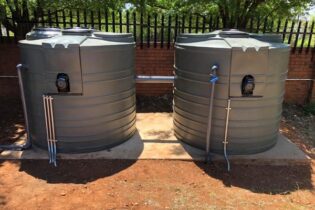The panel discussion on the National Infrastructure Plan 2050 was one of the most eagerly anticipated sessions at the Sustainable Infrastructure Development Symposium – South Africa (SIDS-SA) on Thursday, 7 October.
The President of South Africa, Cyril Ramaphosa, was the convener of the event, which included government ministers, large asset owners, leading private investors and fund managers, MDBs, developers, technology innovators, key advisors and more. The event aimed to facilitate alignment with the objectives of the Sustainable Development Goals (SDGs) and South Africa’s National Development Plan (NDP), as well as to ensure access to greater and economical sources of sustainable funding. Panellists in the National Infrastructure Plan 2050 session included Minister of Public Works and Infrastructure, Patricia de Lille; Consulting Engineers South Africa (CESA) president, Sugen Pillay; Dr Miriam Altman from the National Planning Commission; Nick Smallwood, CEO of the United Kingdom’s Infrastructure and Projects Authority; special advisor to the CEO of NEPAD, Professor Tandeka Nkiwane; and Marie Francoise Marie-Nelly, the World Bank’s country director for Africa. CESA’s Pillay represented private sector companies in the consulting engineering space who happen to be critical stakeholders in South Africa’s ambitious infrastructure drive. In his opening remarks, Pillay mentioned that consulting engineering companies are interested in the implementation of the National Infrastructure Plan 2050. “It is a plan we wholeheartedly support, and I believe we have a number of these plans, and we are slowly getting to a point where we can see how they are going to take effect, with implementation imminent,” he said.Talking about the triple challenge of inequality, poverty, and unemployment, which the plan seeks to address, Pillay mentioned that CESA has been encouraging its member companies over the last two years to be mindful of this in every project that they embark on.
“In every project we implement, we need to ask ourselves these questions – how do we make this a reality and how do we contribute through projects, so that such projects become vehicles for poverty alleviation and job creation,” stated Pillay. One of the key challenges identified by Pillay is the capacity of the state, which has been an integral part of his presentations when addressing different audiences throughout the year. “There is an acknowledgment that there is a lack of skills in certain areas in the state and people are going to be key if you want to deliver on this plan. We have ideas on how these can be addressed so we can develop capacity where it doesn’t exist,” stated Pillay. The CESA president also didn’t hold back on infrastructure spend and procurement which he regards as a key challenge. “The supply chain function cannot be a back-office function, it needs to be a strategic function if any of our public sector institutions want to deliver on the mandate they have been given,” he said. In his closing remarks, Pillay said we need to implement the plan urgently. “Alluding to what Minister de Lille said at the CESA Infrastructure Indaba in 2020, the patience of our people is running low, and as the private sector, we want to partner with the state, and we want to make this a success”.






